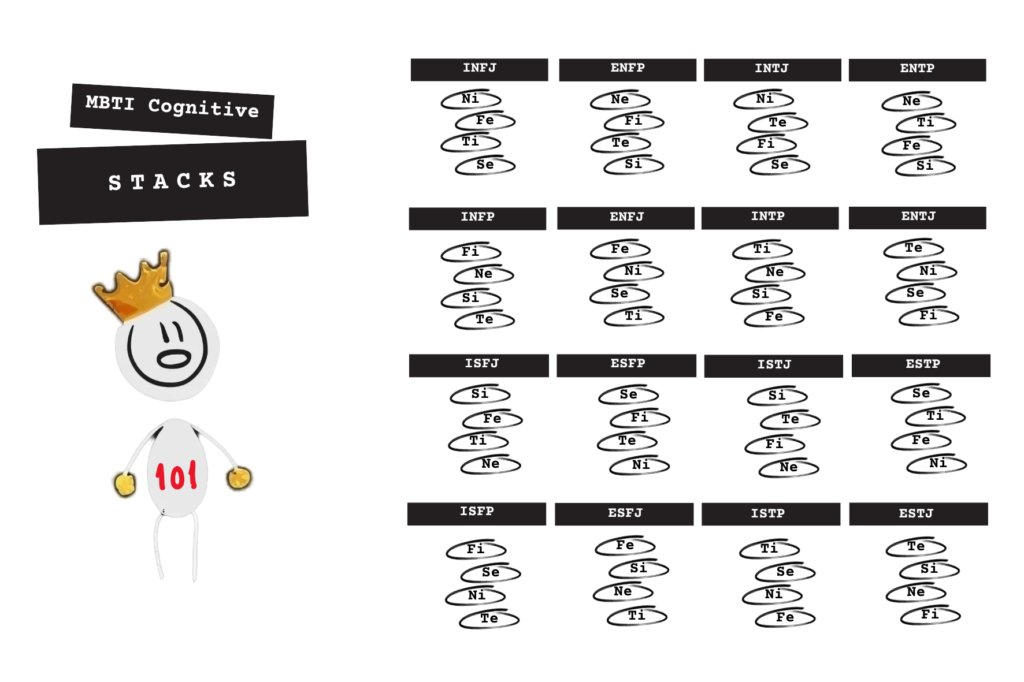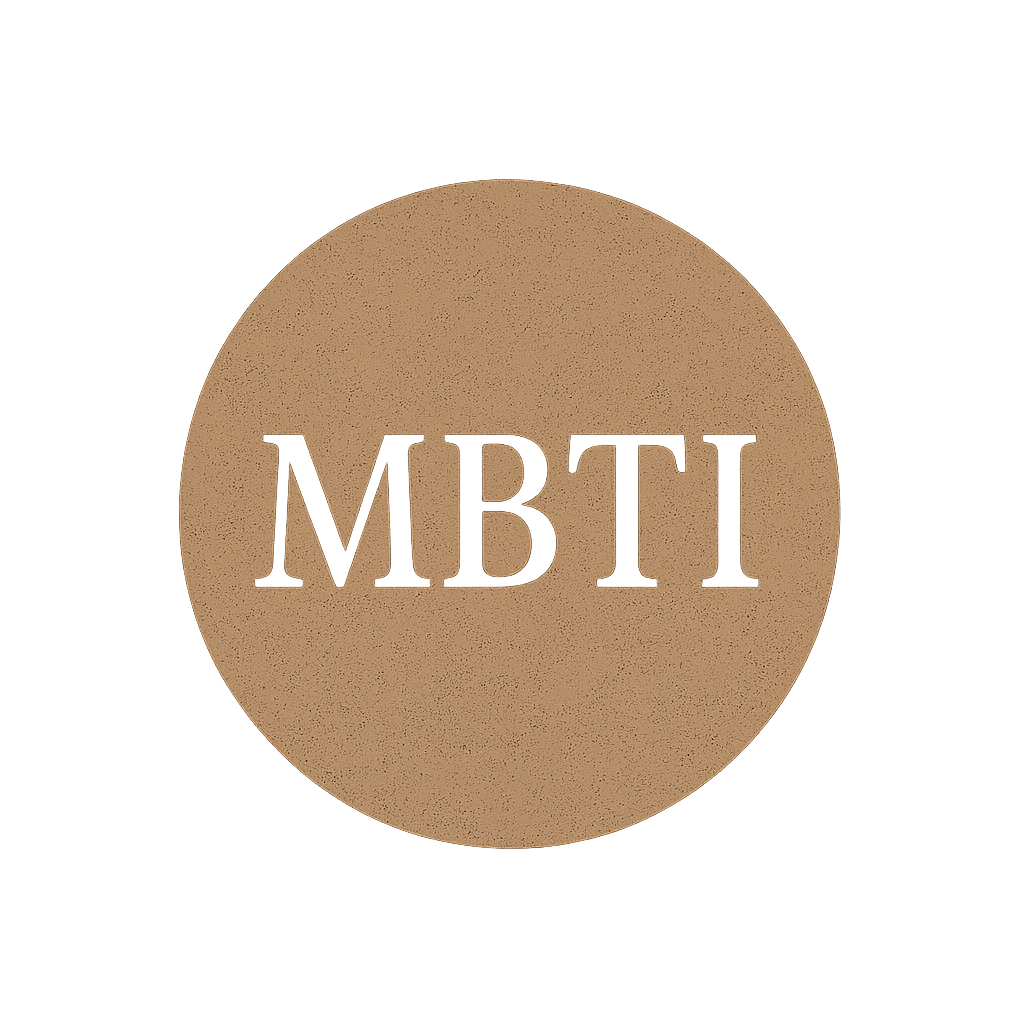The Myers-Briggs Type Indicator (MBTI) is a widely used personality assessment tool that categorizes individuals into one of 16 personality types. Developed by Katharine Cook Briggs and her daughter Isabel Briggs Myers, the MBTI is based on Carl Jung’s theory of psychological types, published in his 1921 book Psychological Types.
The MBTI identifies personality types based on four dichotomies, each representing a pair of opposing preferences:
Extraversion(E) vs. Introversion(I)
- Extraversion (E): Prefers to focus on the external world, gaining energy from social interactions and external activities.
- Introversion (I): Prefers to focus on the internal world, gaining energy from solitude and internal reflections.
Sensing(S) vs. Intuition(N)
- Sensing (S): Prefers to focus on the present and concrete information, valuing facts, details, and practical solutions.
- Intuition (N): Prefers to focus on future possibilities and abstract information, valuing insights, patterns, and innovation.
Thinking(T) vs. Feeling(F)
- Thinking (T): Prefers to make decisions based on logic, objectivity, and rational analysis.
- Feeling (F): Prefers to make decisions based on values, emotions, and the consideration of feelings.
- Judging (J): Prefers a structured and organized approach to life, seeking closure and making decisions quickly.
- Perceiving (P): Prefers a flexible and adaptable approach to life, keeping options open and exploring possibilities.

Combining these preferences, the MBTI generates 16 personality types, each represented by a four-letter code. Each type describes how a person perceives the world, makes decisions, and interacts with others.
ISTJ – Si (Introverted Sensing), Te (Extraverted Thinking), Fi (Introverted Feeling), Ne (Extraverted Intuition)
- Si: Relies on past experiences and traditions.
- Te: Focuses on efficiency, logic, and organization.
- Fi: Values, personal beliefs, and internal moral code.
- Ne: Explores possibilities and potential outcomes.
ISFJ – Si (Introverted Sensing), Fe (Extraverted Feeling), Ti (Introverted Thinking), Ne (Extraverted Intuition)
- Si: Detailed memory and a strong sense of duty.
- Fe: Prioritizes harmony and the needs of others.
- Ti: Analyzes and categorizes information logically.
- Ne: Considers alternative perspectives and ideas.
INFJ – Ni (Introverted Intuition), Fe (Extraverted Feeling), Ti (Introverted Thinking), Se (Extraverted Sensing)
- Ni: Focuses on future visions and deep insights.
- Fe: Concerned with social harmony and empathy.
- Ti: Seeks internal consistency and logical clarity.
- Se: Attuned to the present moment and sensory experiences.
INTJ – Ni (Introverted Intuition), Te (Extraverted Thinking), Fi (Introverted Feeling), Se (Extraverted Sensing)
- Ni: Foresees potential outcomes and abstract patterns.
- Te: Implements efficient and strategic plans.
- Fi: Internal value system guides decisions.
- Se: Engages with the external world through action.
ISTP – Ti (Introverted Thinking), Se (Extraverted Sensing), Ni (Introverted Intuition), Fe (Extraverted Feeling)
- Ti: Analyzes and solves problems logically.
- Se: Engages actively with the physical world.
- Ni: Anticipates outcomes and develops insights.
- Fe: Considers others’ feelings and social norms.
ISFP – Fi (Introverted Feeling), Se (Extraverted Sensing), Ni (Introverted Intuition), Te (Extraverted Thinking)
- Fi: Deeply values personal emotions and authenticity.
- Se: Focuses on immediate sensory experiences.
- Ni: Perceives underlying meanings and future implications.
- Te: Organizes and structures external activities.
INFP – Fi (Introverted Feeling), Ne (Extraverted Intuition), Si (Introverted Sensing), Te (Extraverted Thinking)
- Fi: Driven by personal values and inner morals.
- Ne: Explores possibilities and abstract concepts.
- Si: Reflects on past experiences and internal sensations.
- Te: Seeks to bring order and effectiveness to tasks.
INTP – Ti (Introverted Thinking), Ne (Extraverted Intuition), Si (Introverted Sensing), Fe (Extraverted Feeling)
- Ti: Pursues understanding through logical analysis.
- Ne: Generates ideas and considers potential outcomes.
- Si: Relates present experiences to past knowledge.
- Fe: Aware of social dynamics and others’ emotions.
ESTP – Se (Extraverted Sensing), Ti (Introverted Thinking), Fe (Extraverted Feeling), Ni (Introverted Intuition)
- Se: Acts on impulses and seeks sensory stimulation.
- Ti: Breaks down problems with logical thinking.
- Fe: Adapts to social situations and reads emotions.
- Ni: Recognizes patterns and future possibilities.
ESFP – Se (Extraverted Sensing), Fi (Introverted Feeling), Te (Extraverted Thinking), Ni (Introverted Intuition)
- Se: Thrives on sensory experiences and spontaneity.
- Fi: Guided by inner feelings and personal values.
- Te: Organizes actions to achieve goals efficiently.
- Ni: Senses future outcomes and underlying meanings.
ENFP – Ne (Extraverted Intuition), Fi (Introverted Feeling), Te (Extraverted Thinking), Si (Introverted Sensing)
- Ne: Loves exploring new ideas and possibilities.
- Fi: Driven by personal convictions and authenticity.
- Te: Structures tasks to be effective and productive.
- Si: Reflects on past experiences for insight.
ENTP – Ne (Extraverted Intuition), Ti (Introverted Thinking), Fe (Extraverted Feeling), Si (Introverted Sensing)
- Ne: Innovates and explores numerous possibilities.
- Ti: Analyzes concepts for logical consistency.
- Fe: Navigates social interactions with ease.
- Si: Relates current ideas to past experiences.
ESTJ – Te (Extraverted Thinking), Si (Introverted Sensing), Ne (Extraverted Intuition), Fi (Introverted Feeling)
- Te: Focuses on productivity, organization, and leadership.
- Si: Values tradition and relies on past experiences.
- Ne: Considers future possibilities and strategic plans.
- Fi: Holds personal values and ethics.
ESFJ – Fe (Extraverted Feeling), Si (Introverted Sensing), Ne (Extraverted Intuition), Ti (Introverted Thinking)
- Fe: Cares about others’ feelings and maintaining harmony.
- Si: Focuses on past traditions and detailed experiences.
- Ne: Looks at possibilities for the future and improvement.
- Ti: Analyzes situations for logical consistency.
ENFJ – Fe (Extraverted Feeling), Ni (Introverted Intuition), Se (Extraverted Sensing), Ti (Introverted Thinking)
- Fe: Prioritizes social harmony and empathy.
- Ni: Focuses on future visions and deep insights.
- Se: Engages with the present through sensory awareness.
- Ti: Analyzes and seeks logical clarity.
ENTJ – Te (Extraverted Thinking), Ni (Introverted Intuition), Se (Extraverted Sensing), Fi (Introverted Feeling)
- Te: Leads with strategic planning and efficiency.
- Ni: Sees long-term possibilities and abstract concepts.
- Se: Takes action based on immediate sensory information.
- Fi: Holds firm internal values and beliefs.
***
